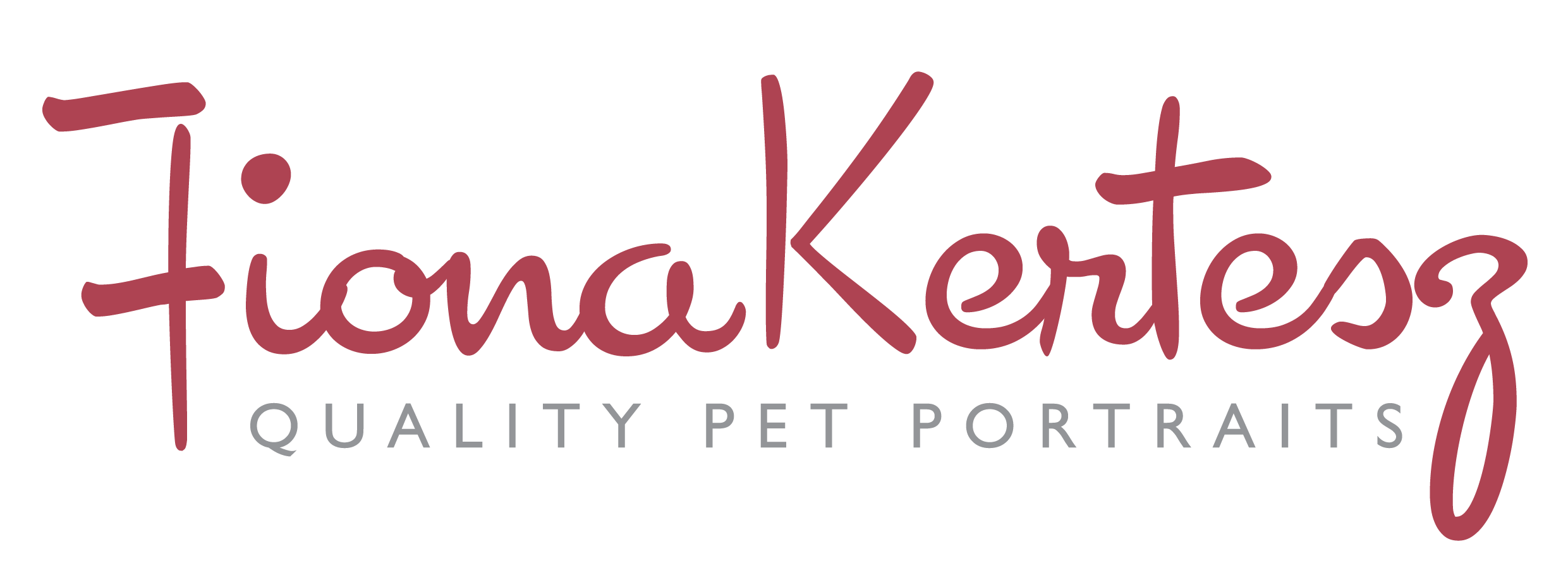Photography Tips
Crucial to a good painting, the better the photo the better the portrait. However, sometimes quite it can be tricky to achieve. Here are some tips which will hopefully make your mission a little easier. If you are within the area, I can take the photographs for you at no extra charge. Please get it touch if you would like help with this.
Ah the elusive photo. The most important factor is that it is clear, in focus, with sharp detail while capturing your pets personality and aspects you love. A good photograph of the head and shoulders is excellent for a portrait, or it can be your pet lying around on its back, or smiling at you while fetching a stick. The best photo that you feel captures your pet's personality at its finest.
Use Natural Daylight
The best time to photograph your pet is in natural daylight (preferably cloudy) and avoid using the flash, as natural daylight shows the true colouring of your pet. Try to take the photo outside if you can. If not than choose a room with good natural lighting and near a window. However, don't shoot directly into the light source, have your back to the window so the light falls on your pet, not behind it.
Get Down On Their Level
Take the photos down on their level, or have a little distance and use the zoom function if you have it. Try to avoid taking photos looking straight down at your pet (I have a perfect example of this my bad photos) as this pose can be an unflattering angle for a portrait.
Use High Resolution
Set your camera to high resolution and use the zoom function for close-ups. I'm not sure if all camera's have this, but I have found if I press the button down halfway (it normally stops at a resting point) then the photo is ready to take and there won't be a delay while the camera adjusts to the light.
Treats Are Your Friend (so is help)
If you are taking the photos yourself, keep treats handy. It can really help to have someone with you to get their attention while you take the photos, especially if your pet is camera shy. If you want a photo with their ears pricked, whistling or clapping or noise of some kind can help as dogs quite often drop their ears when they look at you. Be patient, it can take some time (and a few photo shoots) to get the photo you want. While I work from one main photo, its great if I have a few photos to reference from to get a good idea of the colouring, texture and personality. You will probably find that you will get many cute photos out of your photo shoots, even if they are not all suitable for portraits.
While I cannot paint what I cannot see, there is some room for flexibility. Different aspects can be taken from different photos (for example, a tail moved, a collar removed), given that the the photos are all quite similar in angles and lighting.
Good Photos
These are good examples of great portrait photos.
This is China, a blue Great Dane puppy. Such a proud photograph and a perfect example for a pet portrait, both in oil and graphite. Clear and sharp with great detail.
My Nikki, another clear and sharp photo, and a great charachter photo as she was always rolling in the sand! This would be more suited to oil than pencil, as you may not know what the sand was in a graphite portrait, and its difficult to see her eyes clearly.
Both of these photos have excellent, sharp detail, and would make fabulous portraits in either oil or pencil.
Bad Photos
These are good examples of unsuitable portrait photos.
The two Danes on the left are too dark and I am unable to make out some features. This photo is a good example of what can happen when you are shooting directly into a light source, especially with dark coloured pets.
The Dane on the right is too blurry. I took this photo and I think this was a case of China trying to nose the camera.
The photo on the left is my girl Morgan as an adult. Such a clear, sharp photo but unfortunately, the angle is wrong. As you hang portraits up on a wall, it is much better if the photo is taken at their level, rather than looking down on them. Portrait's tend to be very three-dimensional and one at this angle would look a little strange.
The photo on the right is Lace and is far too blurry to work with. While I could possibly still work with the blurry photograph of China as it was a close up, this photo of Lace would be unsuitable as I can't see any detail at all.
If you have any questions or need some help please get in touch.








